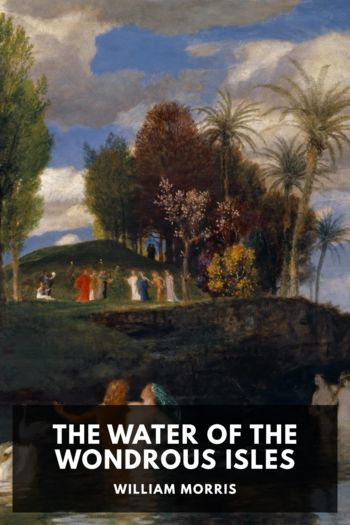An Antarctic Mystery Jules Verne (children's ebooks online txt) 📖

- Author: Jules Verne
Book online «An Antarctic Mystery Jules Verne (children's ebooks online txt) 📖». Author Jules Verne
By Jules Verne.
This ebook is the product of many hours of hard work by volunteers for Standard Ebooks, and builds on the hard work of other literature lovers made possible by the public domain.
This particular ebook is based on a transcription produced for Project Gutenberg and on digital scans available at the HathiTrust Digital Library.
The writing and artwork within are believed to be in the U.S. public domain, and Standard Ebooks releases this ebook edition under the terms in the CC0 1.0 Universal Public Domain Dedication. For full license information, see the Uncopyright at the end of this ebook.
Standard Ebooks is a volunteer-driven project that produces ebook editions of public domain literature using modern typography, technology, and editorial standards, and distributes them free of cost. You can download this and other ebooks carefully produced for true book lovers at standardebooks.org.
I The Kerguelen IslandsNo doubt the following narrative will be received with entire incredulity, but I think it well that the public should be put in possession of the facts narrated in “An Antarctic Mystery.” The public is free to believe them or not, at its good pleasure.
No more appropriate scene for the wonderful and terrible adventures which I am about to relate could be imagined than the Desolation Islands, so called, in 1779, by Captain Cook. I lived there for several weeks, and I can affirm, on the evidence of my own eyes and my own experience, that the famous English explorer and navigator was happily inspired when he gave the islands that significant name.
Geographical nomenclature, however, insists on the name of Kerguelen, which is generally adopted for the group which lies in 49° 45′ south latitude, and 69° 6′ east longitude. This is just, because in 1772, Baron Kerguelen, a Frenchman, was the first to discover those islands in the southern part of the Indian Ocean. Indeed, the commander of the squadron on that voyage believed that he had found a new continent on the limit of the Antarctic seas, but in the course of a second expedition he recognized his error. There was only an archipelago. I may be believed when I assert that Desolation Islands is the only suitable name for this group of three hundred isles or islets in the midst of the vast expanse of ocean, which is constantly disturbed by austral storms.
Nevertheless, the group is inhabited, and the number of Europeans and Americans who formed the nucleus of the Kerguelen population at the date of the 2nd of August, 1839, had been augmented for two months past by a unit in my person. Just then I was waiting for an opportunity of leaving the place, having completed the geological and mineralogical studies which had brought me to the group in general and to Christmas Harbour in particular.
Christmas Harbour belongs to the most important islet of the archipelago, one that is about half as large as Corsica. It is safe, and easy, and free of access. Your ship may ride securely at single anchor in its waters, while the bay remains free from ice.
The Kerguelens possess hundreds of other fjords. Their coasts are notched and ragged, especially in the parts between the north and the southeast, where little islets abound. The soil, of volcanic origin, is composed of quartz, mixed with a bluish stone. In summer it is covered with green mosses, grey lichens, various hardy plants, especially wild saxifrage. Only one edible plant grows there, a kind of cabbage, not found anywhere else, and very bitter of flavour. Great flocks of royal and other penguins people these islets, finding good lodging on their rocky and mossy surface. These stupid birds, in their yellow and white feathers, with their heads thrown back and their wings like the sleeves of a monastic habit, look, at a distance, like monks in single file walking in procession along the beach.
The islands afford refuge to numbers of sea-calves, seals, and sea-elephants. The taking of those amphibious animals either on land or from the sea is profitable, and may lead to a trade which will bring a large number of vessels into these waters.
On the day already mentioned, I was accosted while strolling on the port by mine host of mine inn.
“Unless I am much mistaken, time is beginning to seem very long to you, Mr. Jeorling?”
The speaker was a big tall American who kept the only inn on the port.
“If you will not be offended, Mr. Atkins, I will acknowledge that I do find it long.”
“Of course I won’t be offended. Am I not as well used to answers of that kind as the rocks of the Cape to the rollers?”
“And you resist them equally well.”
“Of course. From the day of your arrival at Christmas Harbour, when you came to the Green Cormorant, I said to myself that in a fortnight, if not in a week, you





Comments (0)